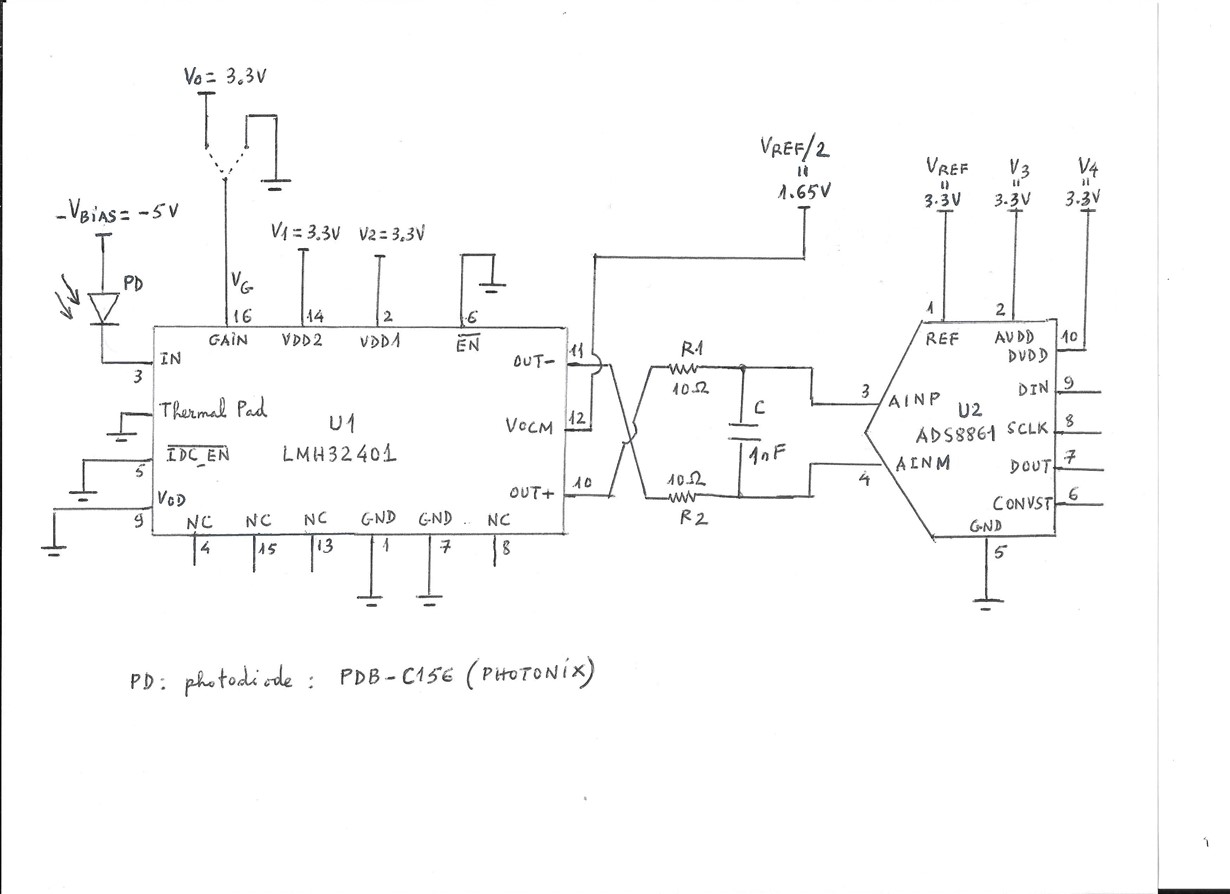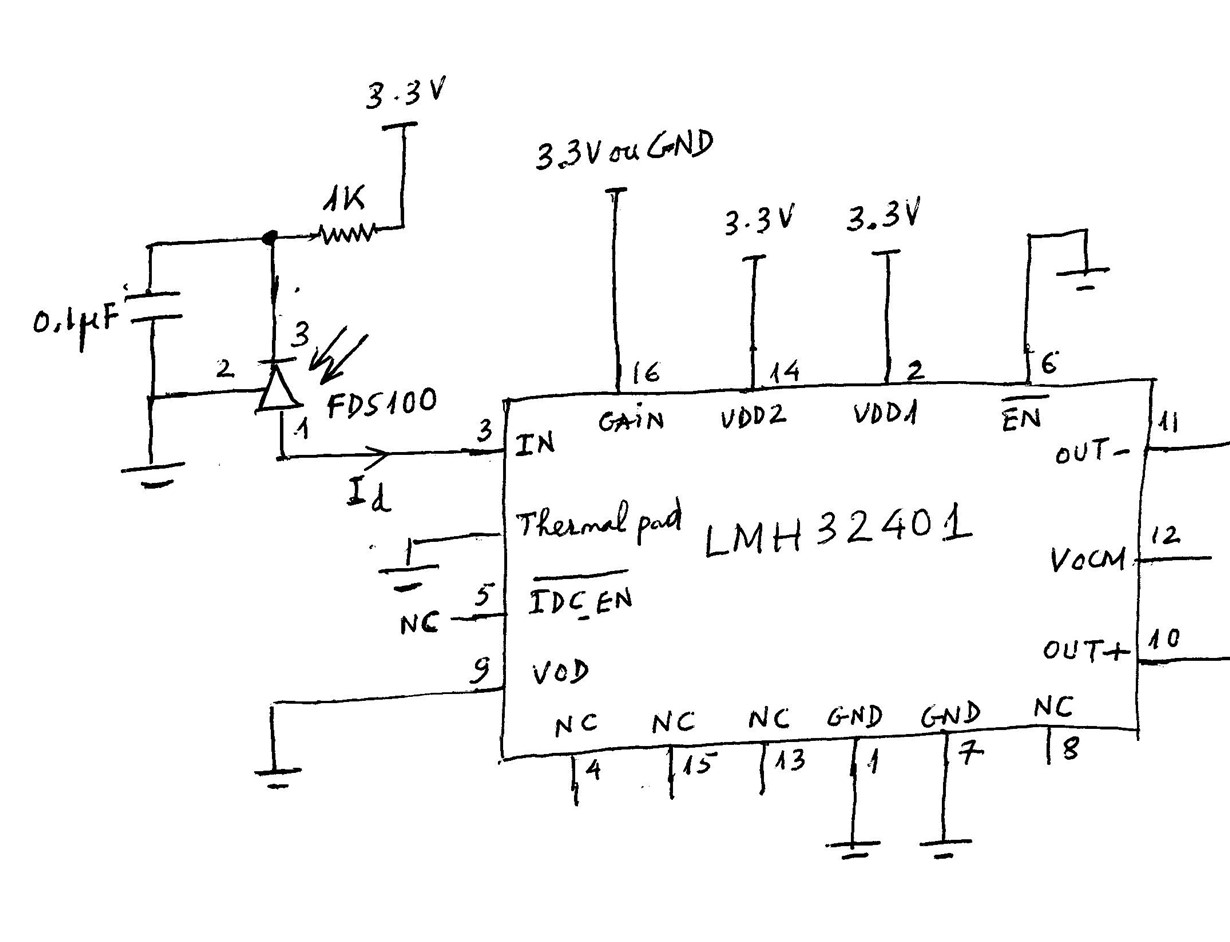Other Parts Discussed in Thread: TINA-TI, ADS8861, ADC12QJ1600, ADS8900B, ADS9224R, THS4551, ADS127L01, OPA857, ADS8881
First of all, please send me the most recent TINA-TI spice model for the device LMH32401.
Then please send me some basic results (curves) of simulations carried out with the TINA-TI software and which allow to assess the performance of the LMH32401 device. For example: if we put a unit step or a pulse at the input, what are the outputs? I ask this to be able to verify my strange results.
Finally, my design consists in detecting a light by a photodiode which I will place at the input of the LMH32401 device. At the output of the differential LMH32401 I will connect a differential ADC with SPI interface. Note that the ADC must be differential and also equivalent to a 100 Ohms load because the LMH32401 sis designed to drive at 100 Ohms load. Thank you for advising me an ADC who respect these conditions.
If you find that these two devices (LMH32401 and ADS8861) are incompatible, please offer me a differential TIA and a differential ADC with which I can realize my design. I prefer to use differential devices to minimize common mode noise.




